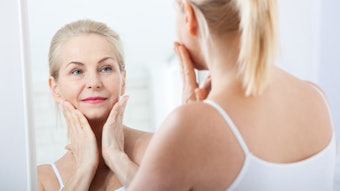If you are deficient in vitamin D, getting a little sun may actually reduce your risk of dying from certain non-skin cancers, according to a new report. And that benefit may outweigh the risk of getting skin cancer.
When it comes to reducing the risk of dying from internal cancers, "sun exposure is good for you," says Richard B. Setlow, PhD, senior biophysicist emeritus at the U.S. Department of Energy's Brookhaven National Laboratory in Upton, N.Y. He is a co-author of the study, along with scientists from Norway's University of Oslo and the Institute for Cancer Research in Montebello.
Sunlight triggers production of vitamin D, which in turn has been shown to help reduce the risk of dying from breast, colon, prostate, and lung cancers.
But Setlow cautions that he's talking about only brief exposure. "If you get too much sun exposure for too long, you might get malignant melanoma," says Setlow, who is credited with establishing the link between sunlight and the deadly skin cancer malignant melanoma. "But if you have an internal cancer, you might be cured."
Less important in the debate, he adds, is the risk of getting non-melanoma skin cancers from sun exposure. "Squamous and basal [two other forms of skin cancer] are easy to cure," says Setlow.
Sunlight's cancer connection
For the study, the researchers used a special model to calculate how much vitamin D is triggered by sunlight exposure in different populations of people, depending on how far they live from the equator.
Among the findings: those who live in Australia produce 3.4 times as much vitamin D as a result of sun exposure than do people who live in the United Kingdom, and 4.8 times as much as Scandinavians do.
The team also looked at the incidence of various forms of cancer classified by latitude and then determined the survival rates from these cancers.
In populations with similar skin types, the incidence of all kinds of skin cancer increases from north to south, they found.
The incidence of internal cancers--colon, lung, breast and prostate--also increased from north to south. But Setlow's team found that those who lived in southern latitudes -- and who made more vitamin D from sun exposure -- were much less likely to die from those cancers than were the northern latitude residents.
"Vitamin D reduces the death rate from internal cancer," Setlow tells WebMD.
The paper will appear online this week in the Proceedings of the National Academy of Sciences and is scheduled to be published in the January 15 issue.
Sun, vitamin D and cancer
The researchers "took information that was known and looked at it in a different way," says Cedric Garland, DPH, professor of family and preventive medicine at the University of California, San Diego, who has also researched the association between vitamin D, the sun and cancer risk.
The new paper, he adds, "draws attention to existing studies that have shown that vitamin D deficiency is a cause of cancers of the breast, colon, prostate, ovary, pancreas and kidney.''
Advice on sun and vitamin D
Getting brief, unprotected sun exposure might be wise, especially for those over age 60, Setlow says, who are more likely than younger people to be vitamin D-deficient. The chance of brief sun exposure causing deadly skin cancer, which generally takes years to develop, is less likely at that age, he says.
Garland's recommendation: Increase your intake of vitamin D, especially if you think you might be deficient. He recommends 1,000 to 2,000 international units (IU) a day plus 10 or 15 minutes of exposure to the sun within an hour of noon on clear days, with 40% of your skin exposed. Getting a doctor's approval first is wise.
Those two strategies, he says, "will bring the blood level of vitamin D up to what is considered protective."
Skin Cancer Foundation disagrees
Exposure to unprotected sun is not a good idea, according to the Skin Cancer Foundation.
"While some population studies suggest that vitamin D levels, such as those that could result from sun exposure, may be beneficial for cancer survival, current scientific data suggest that proper sun protection remains a key element of a skin cancer protection program," says David J. Leffell, MD, vice president of the Skin Cancer Foundation and director of the Yale Medical Group in New Haven, Connecticut.
Until more is known, he says, dermatologists recommend using sunscreen and other sun precautions and getting vitamin D from foods and supplements.
The adequate intake of vitamin D as set by the Institute of Medicine is 200 IUs for those aged 19 to 50, 400 IUs for those 51 to 70, and 600 IUs for those over age 71. The safe upper limit is 2,000 IUs for those over age 19. Sources of vitamin D from food include salmon, mackerel, and vitamin D-fortified milk and cereal.
By Kathleen Doheny, WebMD, January 7, 2008










